There are many types of wooden furniture, and choosing the right wooden furniture for their residence or industrial premises can be a huge problem for some people.
Especially in the chaotic market, diverse crafts, and rich materials, each wooden furniture has different characteristics and different styles.
In fact, the most important thing when choosing wooden furniture is material.
Today, there are countless wooden furniture materials on the furniture market that dazzle you.
Therefore, we combine the 9 types of wooden furniture that are widely used today, analyze and interpret them one by one, and combine your decoration style and budget to see which material is best for you!
Content
1. Black Walnut Furniture
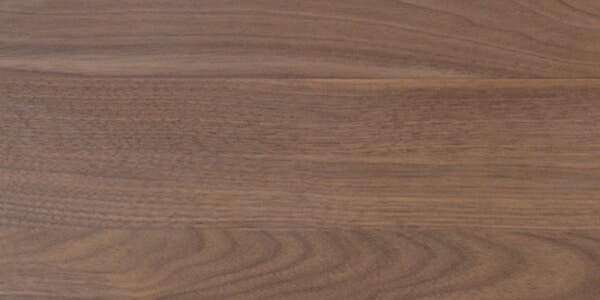
Black walnut is a well-known precious material in furniture. It is mainly produced in North America. The Eastern Black Walnut, often known as the American Black Walnut or American Walnut, is the most commonly used in woodworking.
This type of wood furniture is typically dark, hard, thick, and tightly grained. Woodworkers value it for its strength, texture, and color.
It dries to a very smooth finish and varies in color from milky white in the sapwood to dark chocolate in the heartwood.
Natural walnut wood acquires a beautiful patina over time. It has a huge following of dedicated woodworkers and fine furniture enthusiasts since it is the only dark-brown domestic wood species.
Walnut may also be found in high-end cabinets, natural wood furniture, kitchen accessories, gunstocks, black walnut table, and other products.
The texture of the black walnut is generally straight, sometimes with curled or wavy lines, forming a pleasing decorative pattern.
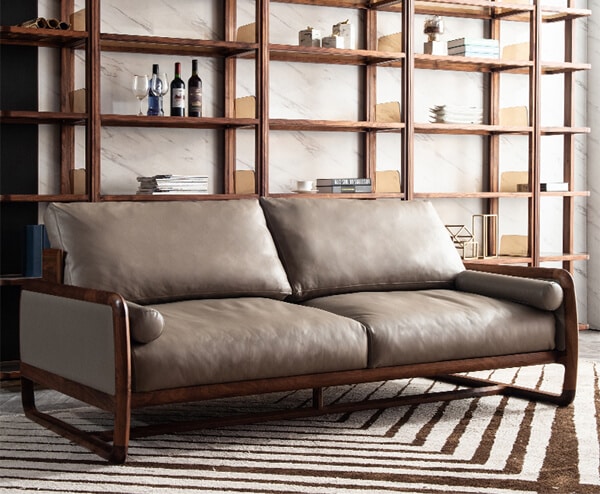
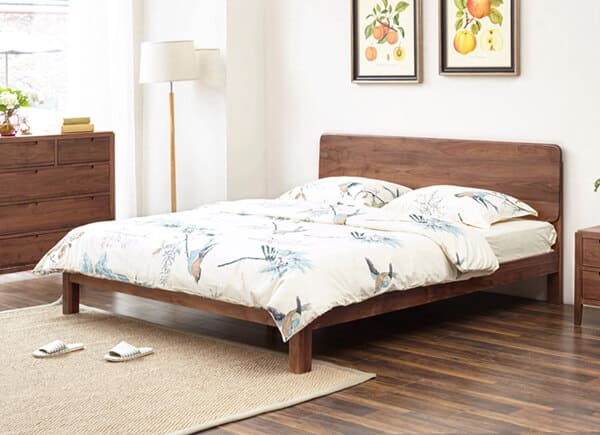
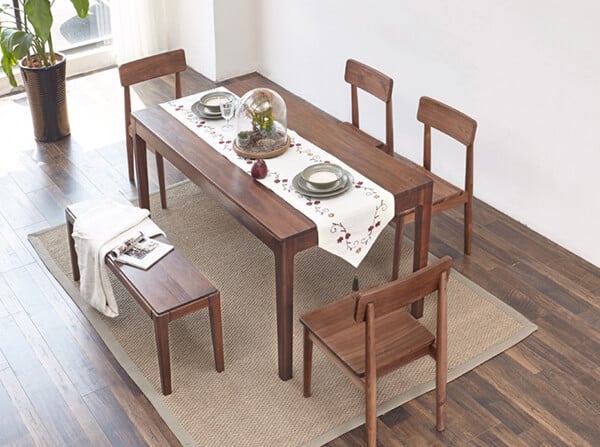
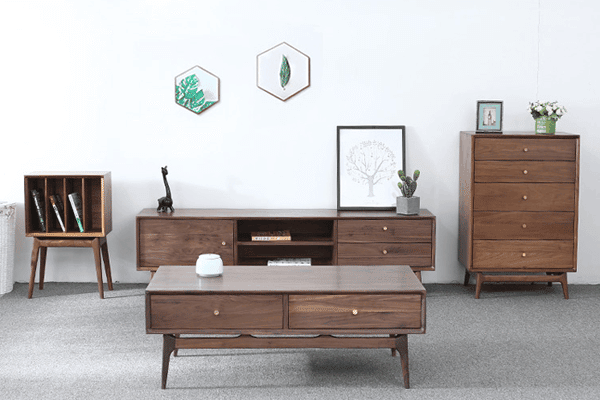
Black walnut has excellent decorative stability and is not easily deformed. This is primarily the reason why many homeowners and business owners purchase a black walnut table, chairs, ornaments, and other furniture accessories.
Most of the black walnut material is typically used in Japanese-style home decoration.
With its pristine look and high-end finish, expect to see a higher price range of black walnut furniture on the market. Generally speaking, the price of black walnut furniture would range around 10000-13000 ¥/m³ (FAS level).
Advantages of having a black walnut furniture
- Black walnut furniture has a calm color and beautiful texture.
- Walnut wood is used for knickknacks, sculptures, and gunstocks, as well as cupboards, floors, chairs, and wood veneers.
- Walnut is an extremely durable wood. Despite variations in humidity and heat, it generally does not warp, and it is rot-resistant.
Disadvantages of having a black walnut furniture
- Black walnut furniture needs proper maintenance, and the general price is high.
- Installing the black walnut furniture can only be done correctly by professionals.
- The transportation of black walnut furniture requires a truck as it is a heavy type of wood furniture.
2. White Oak Furniture
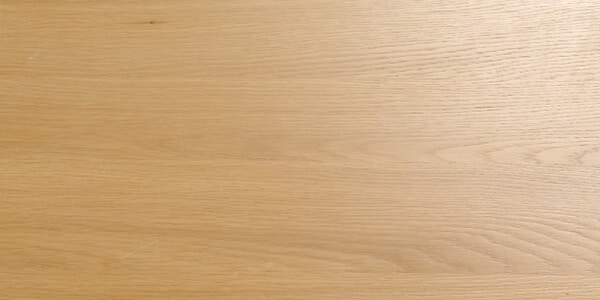
Oak has distinctive mountain-shaped wood grain.
The color and appearance of white oak are similar to that of European oak.
The sapwood is light in color, the heartwood is light brown to dark brown, the white oak appears more in straight lines.
The texture is medium to rough, and the pith beam is significantly longer than red oak.
Because oak is the perfect wood for producing all types of wood furniture, it is extremely popular among customers. White oak is native to the eastern United States and comes from a range of species.
White oak is resistant to moisture and deterioration, making it an excellent choice for outdoor furniture and boating. It’s a cabinet-grade wood for chairs and tables, flooring and trim, and sharp turns inside.
You can see a lot of spliced white oak furniture in the market.
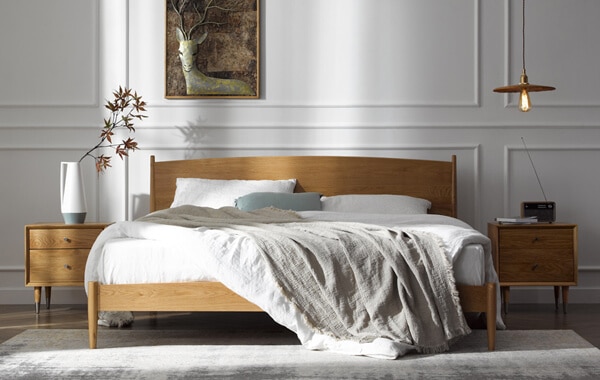
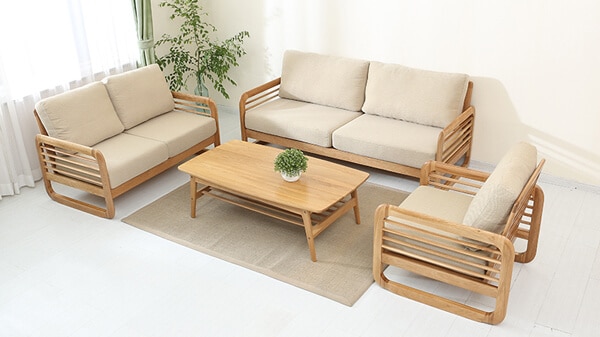
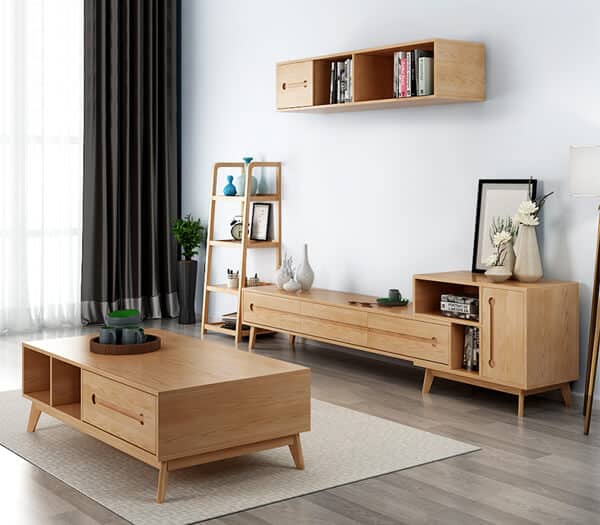
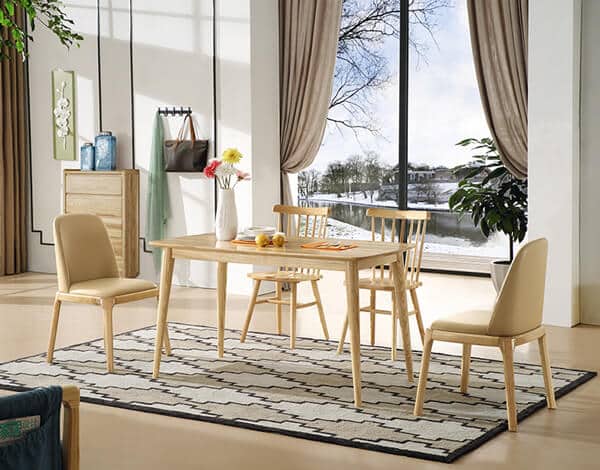
Advantages of white oak furniture:
Here are some of the important advantages of white oak furniture:
- White oak furniture with a strong and hard texture does not distort easily in wet conditions and has a long service life.
- White oak furniture has a similar value to mahogany furniture.
- White oak furniture has a high monetary value as a collectible.
Disadvantages of white oak furniture:
- White oak is tough to work with.
- Importing rare white oak from overseas is expensive. The cost of a raw white oak is 7000-10000 ¥/m³ (FAS level)
- High-density white oak furniture is strong and hefty. It is also easily deformed.
- White oak furniture cannot withstand high temperatures since it will ruin the surface texture.
- Because of its rough grain, white oak furniture is readily destroyed by the impact.
3. Red Oak Furniture
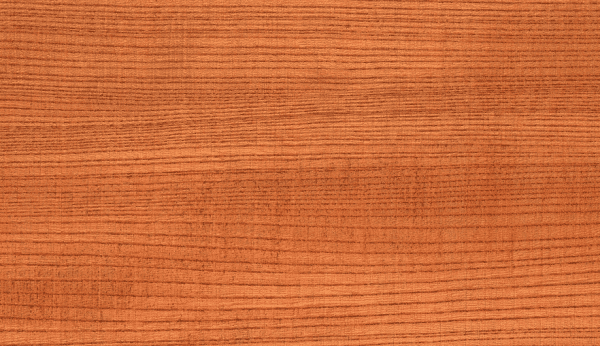
Red oak is not the same as white oak. Red oak is found across the eastern United States.
The redwood is comparatively strong and heavy, and it dries slowly.
In the case of lacquer, some red oak wood grain is comparable to ash, but the red oak wood grain has texture, while the ash does not.
Red oak is permeable and has open grains. It is much more prone to shrinkage than white oak.
Compared to birch or maple, red oak polishes and stains readily and doesn’t have blotching issues.
Because the open pores of red oak absorb stain, the grain patterns become extremely apparent when a dark stain is applied as a finish.
Most home stores have red oak, which is suitable for furniture, flooring, cabinets, cabinet doors, and paneling.
In general, the color, texture, features, and nature of red oak will vary depending on where it is grown.
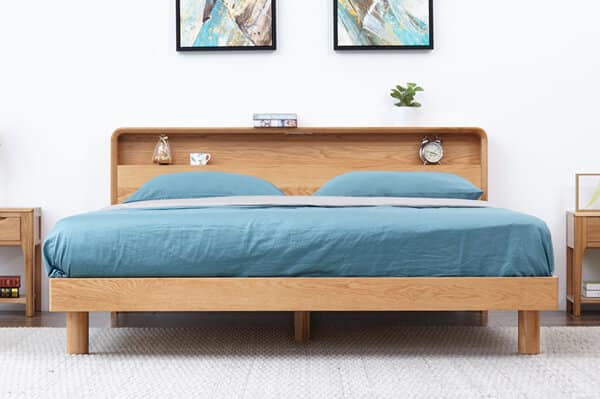
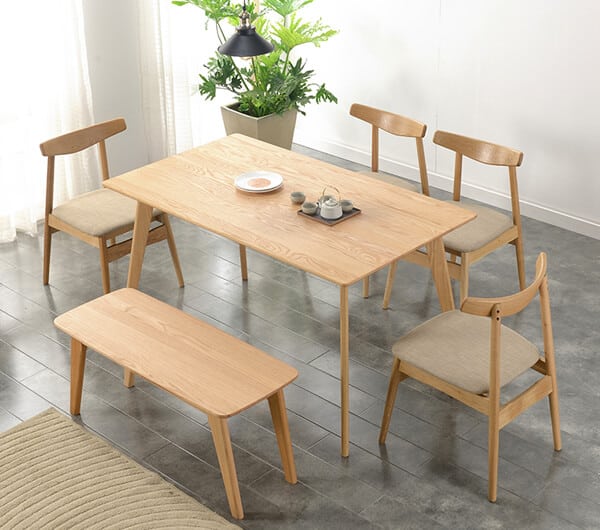
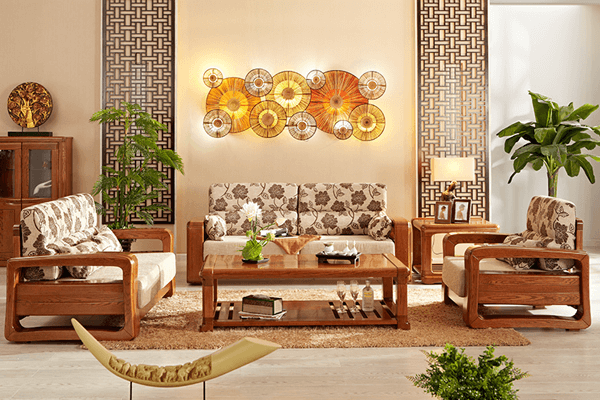
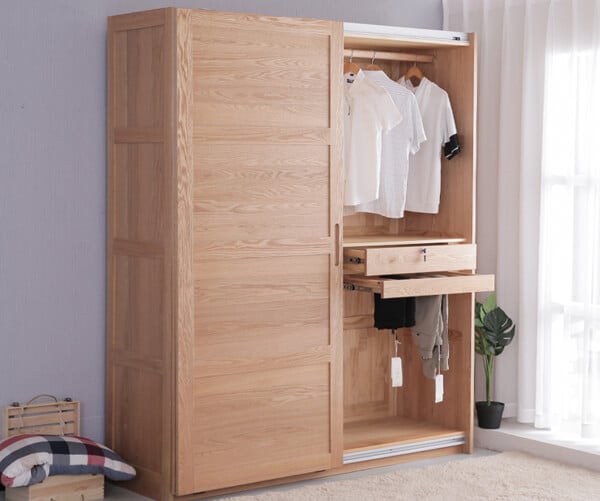
The red oak furniture’s color features are strong, the color is deep, and there is some roughness visible. The raw furniture material price is ranging from 6000-9000 ¥/m³ (FAS level).
Advantages of red oak furniture
- Red oak is stable and durable compared to other furniture materials
- It is highly absorbent to fluids and other liquid material
- It does not corrode and is excellent if you want it to last long.
Disadvantages of red oak furniture
- Red oak has similar drawbacks as white oak in terms of weight, expense, strong grain pattern, and decreased workability in detail-oriented tasks.
- When exposed to the weather, red oak fades and deforms.
4. Chinese Ash Furniture
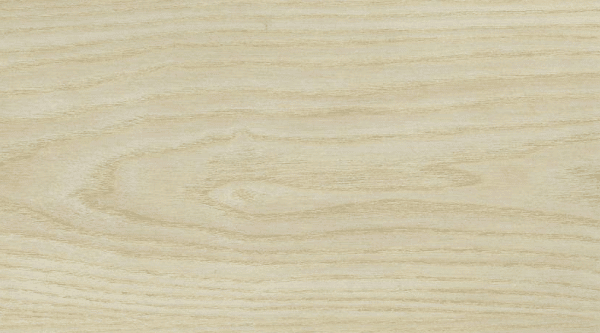
Chinese ash is a wood that is sturdy and does not fracture or distort easily.
It’s the best material for furniture, and its wood composition is strong and elegant in texture.
Chinese ash is actually one of the most chosen for making furniture.
Compared with pine wood, the furniture of ash is tougher and more wear-resistant; comparing with mahogany furniture, ash has a small advantage in price.
The ash is also varied in the material owing to its various distribution regions.
In general, Chinese ash is extensively used in furniture, since the trees in the cold zone grow somewhat sluggish, therefore the trees are relatively robust and appropriate for furniture.
The price range of Chinese ash in the material in terms of its raw material price is 4500-5500¥/m³ (FAS level). This cost is already reasonable and is of good quality for good wood furniture.
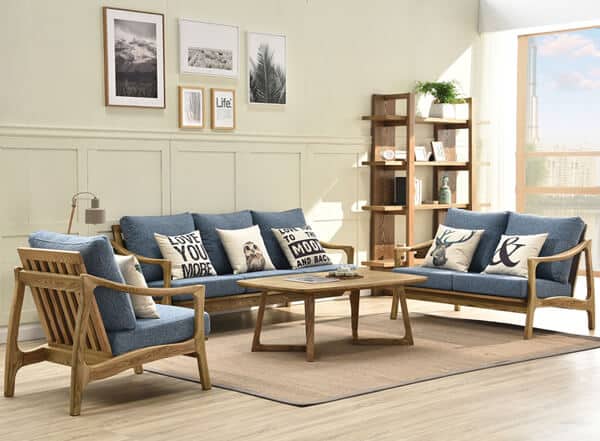
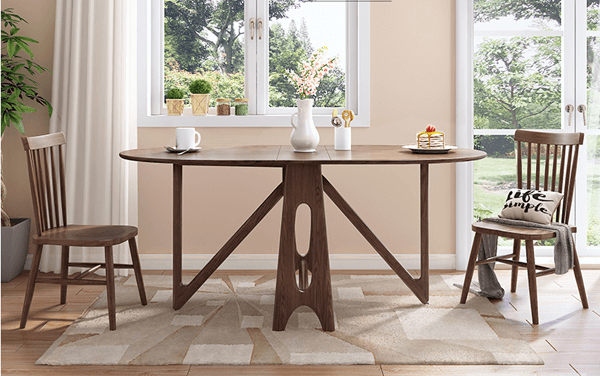
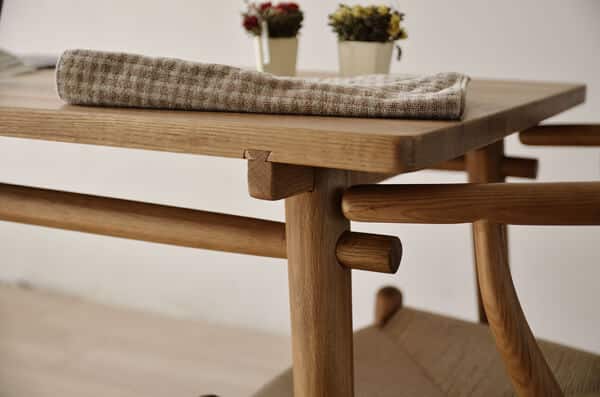
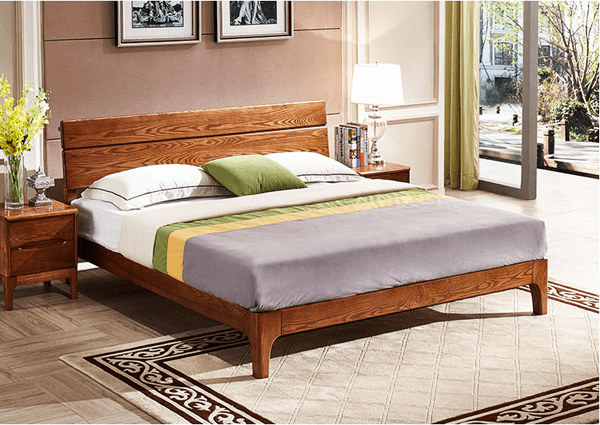
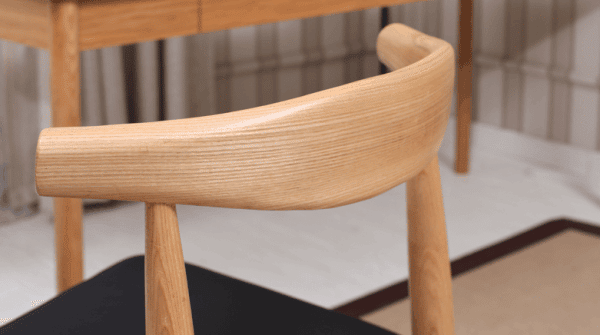
Advantages of Chinese ash
- Ashwood logs are ideal for manufacturing furniture, simple to cut tool processing, refining, anti-corrosion, strength properties, static bending strength, and smoothness.
- Ash is not only lovely to look at, but it is also extremely glossy.
- The ash’s surface is plainly visible and extremely smooth.
- As furniture has great strength and a hefty weight.
Disadvantages of Chinese ash
- The distortion and shrinkage of ash are significant, resulting in all solid wood furniture, which is mainly constructed of splicing.
- Ash has a relatively poor drying performance.
- It’s prone to dry crack formation and other issues.
- You need to be careful in maintaining its quality.
- In terms of technological processes, the ash surface is simple to puff and has higher processing requirements.
5. Beech Furniture
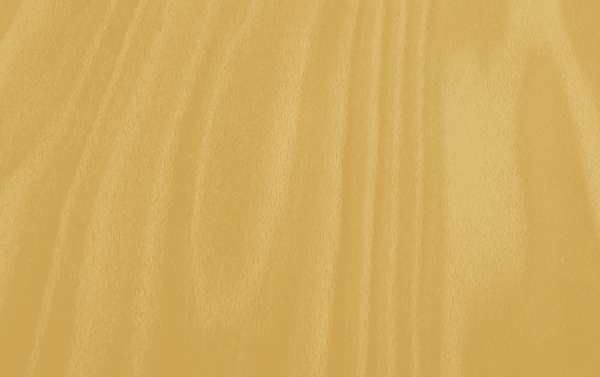
Beechwood furniture materials are mainly used for manufacturing Plywood, Furniture, Model structures.
Beechwood furniture is a medium-hard wood with a straight grain. Therefore this is also the ideal choice for musical instruments and sports gear.
Beech is abundant in the south of China, although it is not traditional furniture in China.
While the big foreign Beech is cultivated in the German Alps, Japan, and other parts of the world.
Although beech is not a luxury wood, it was extensively utilized in classic Ming and Qing Dynasties furniture.
The cost of beech wood used in the Ming and Qing dynasties was quite expensive. It ranges from 5500-7500¥/m³ (FAS level).
Its distinctive pagoda-shaped texture not only displays the complete aristocratic mood.
Beechwood is tight and hefty, the wood grain is narrow and straight, and the tissue structure is minimal.
While common Chinese Beechwood is loose, lightweight, wood grain is not visible, the tissue structure is more robust, and there are a lot of color options based on your preference.
It’s also good wood furniture to complement the contemporary Chinese style home decorating style.
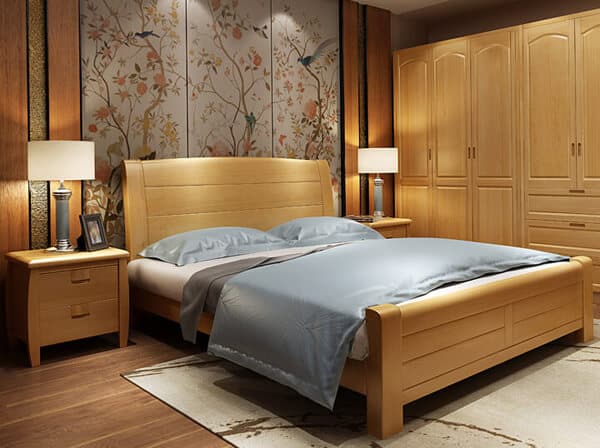
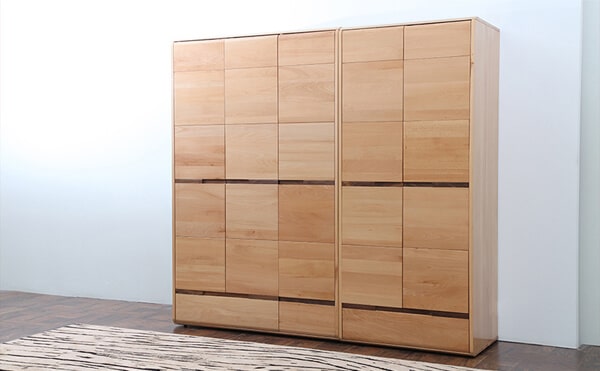
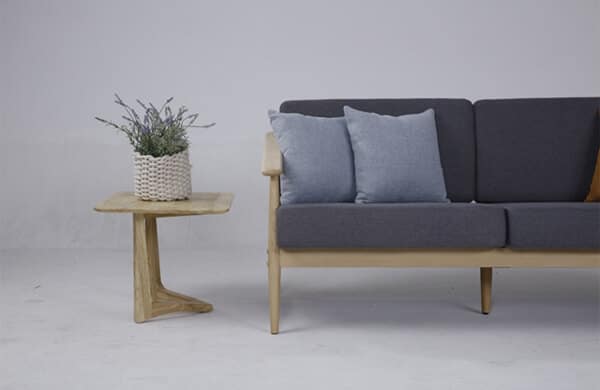
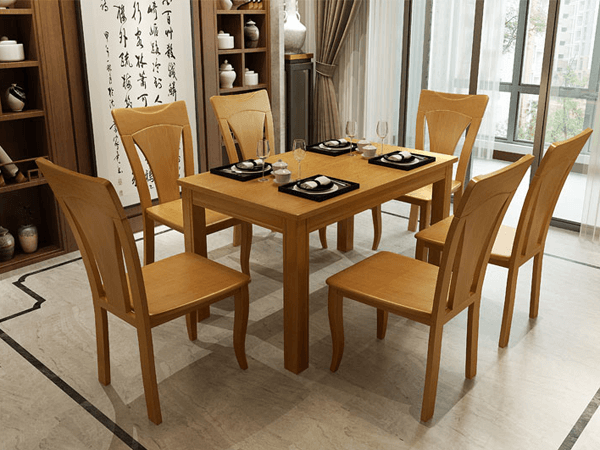
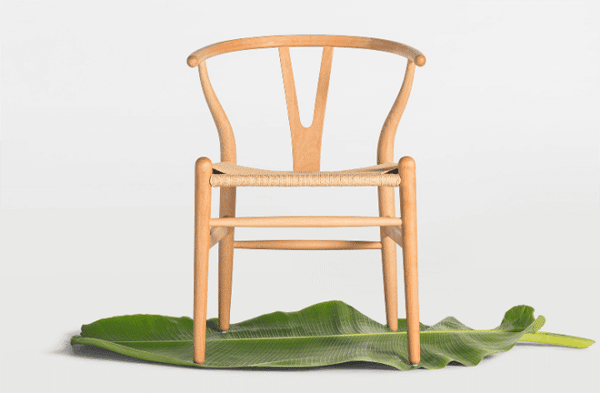
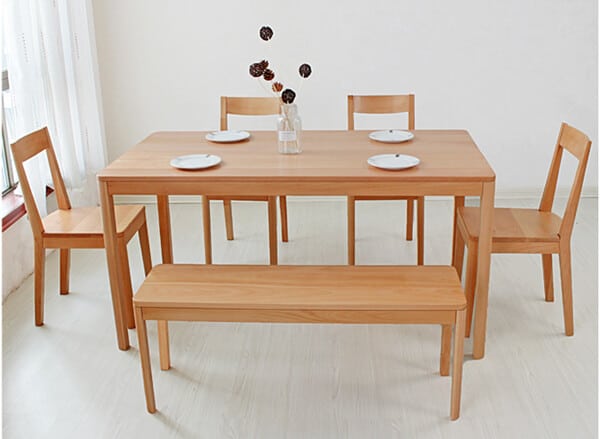
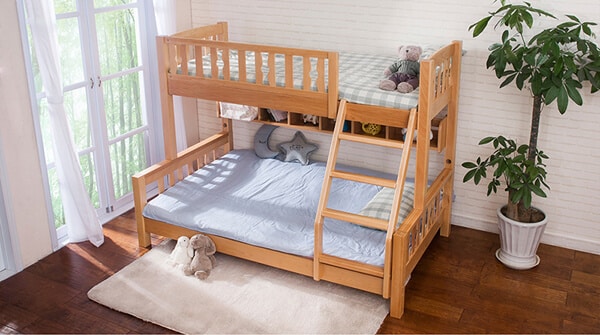
Advantages of Beech
- It has a consistent texture because of its fine and straight grain.
- Because beech is a strong wood, it retains the nail and screw extremely well.
- Its texture retains the shine and paint nicely and provides a final appearance.
- Beechwood furniture is a good option if you want to make different types of furniture.
- With the steam-bending technique, it may be readily banded into a variety of forms.
- This is a strong and durable wood substance, which is excellent for furniture and floor.
- It can resist heavyweights.
- It is not readily scratched or scarred because of its high toughness. Which is preferable for a floor owner.
Disadvantages of Beech
- It cannot resist the weather changes and dust. It begins to decay just a few years after contact with the soil and dampness.
- Experts believe the usage of beech is not appropriate for external applications.
- If we use beech wood without varnish and polish, it then begins to break in a few years. Moisture may be the primary cause for cracking & deforms.
- When it begins to dry again after the moisture, then it starts to flex, which creates a lot of fractures and gaps in the wood joints.
- It absorbs moisture quickly. To avoid this, it is preferable to use treated beech but its price is costly.
With these characteristics, it is more costly than other wood. It must be maintained and cared for on a regular basis.
6. Ashwood Furniture
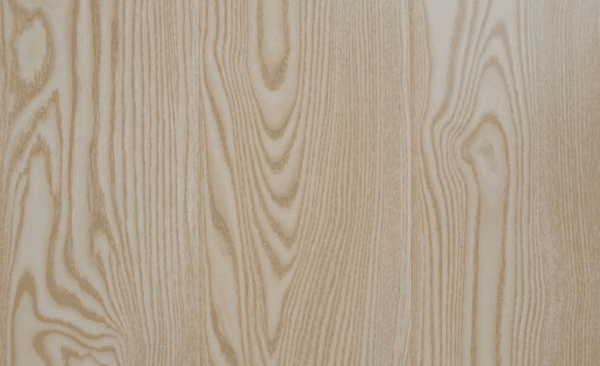
Ashwood furniture has a unique texture and is both stable and springy. It is ideal for flooring as well as tool handles.
Ashwood grows in Cambodia, Europe, America, East Asia, and Southeast Asia.
The most prevalent kind of ash wood is common ash, which is mostly found in the Baltic States. In Europe, there is also mountain ash, sometimes known as the rowanberry tree.
The color of Asian and European ash wood furniture varies.
The color of ash wood may range from light gray to yellowish-white. It is often reddish-white, and the light brown darkens.
The yearly rings are readily apparent in ash wood, creating an intriguing surface structure. The texture of ash wood is intriguing, with thin, black lines.
A locking may occur in unusual circumstances. This is a kind of surface structure caused by a wavy course in ash wood.
Storage that is too wet or incorrectly dried should be avoided, since this may cause red irregular stains in the ash wood.
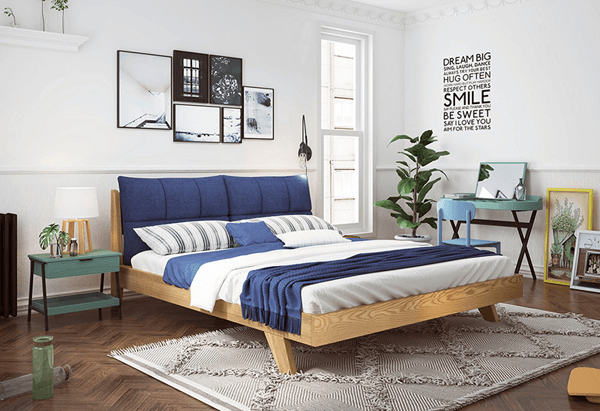
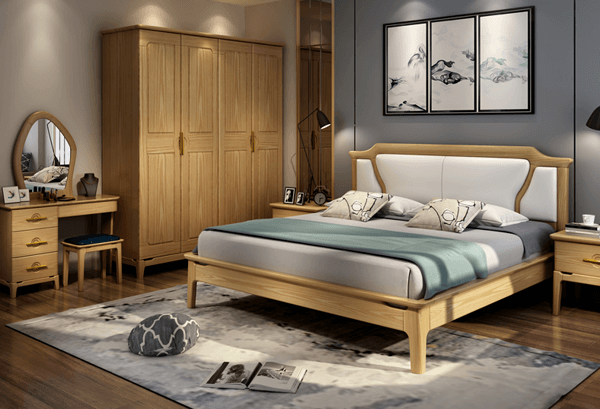
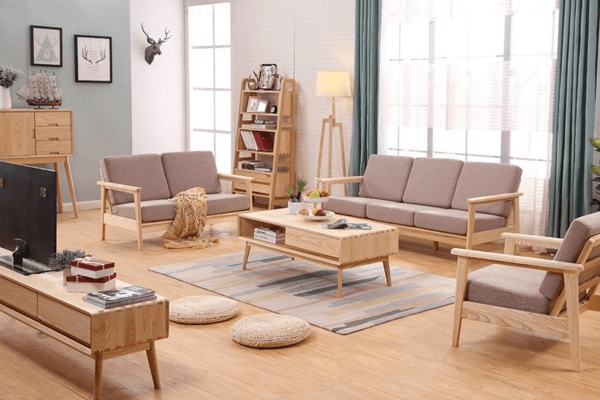
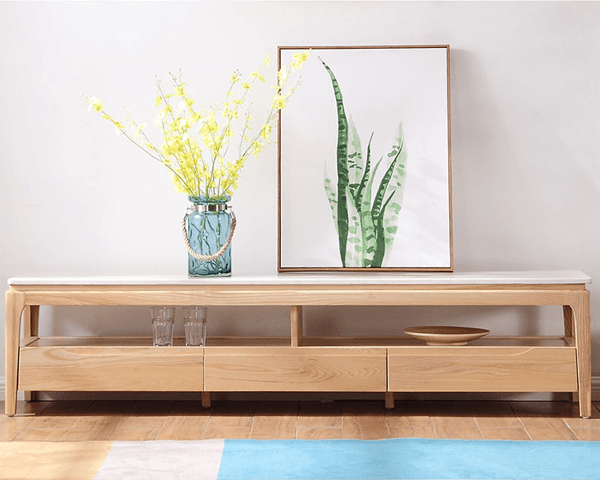
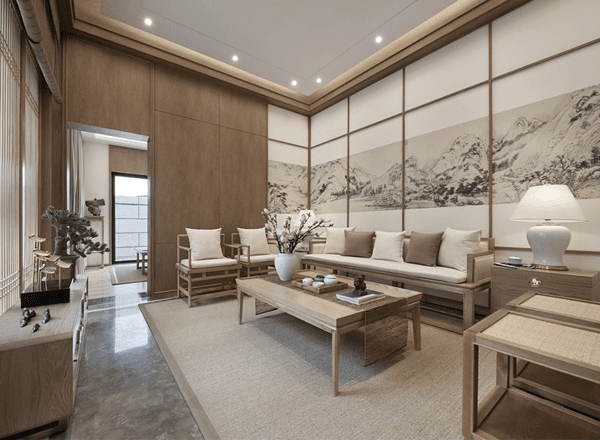
Advantages of ashwood furniture materials
- Ashwood is a flexible and long-lasting material that may be used for a variety of purposes. It is utilized in the manufacture of furniture, smoke, toys, and sports equipment.
- Ashwood is a common wood for sports equipment and tool handles due to its flexibility and toughness.
- Ashwood is found all over the globe.
- The price of ash wood is lower than that of other hardwoods with comparable characteristics. Its pricing range is about 6500-9000/m3 (FAS level).
- The need for Ash Wood in quantity may be readily available.
- When it comes to maintenance, it is simpler to manage than any other hardwood.
Disadvantages of ashwood furniture material
- It is not weather resistant, does not shine well, and has a fragile composition.
- In terms of durability, ash does not farewell. It is suitable for indoor and dry space uses, but not for soil contact applications like fencing and decking.
- After being exposed to moisture, it begins to flex. To ensure its continuous stability, it should be utilized in dry and indoor environments.
7. Elmwood Furniture
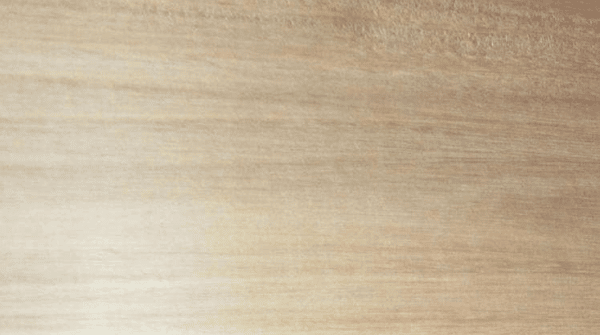
Elmwood furniture is the most common wood for furniture production since it is extensively utilized in modern and historical furniture manufacture.
The wood is very flexible and does not break during production.
Wood offers a significant advantage in the production of curved furniture components such as rocking chair runners.
Elmwood furniture is worth purchasing since it is very durable and sturdy. If you are curious about its price range, it is roughly around 8000-10000¥/m³ (FAS level)
The furniture will look great for years to come and will resist any harshness and stress.
The wood has a natural interlocking pattern that makes it very resistant to splitting.
In terms of wood maintenance, the furniture needs basic frequent upkeep, such as vacuuming and dusting.
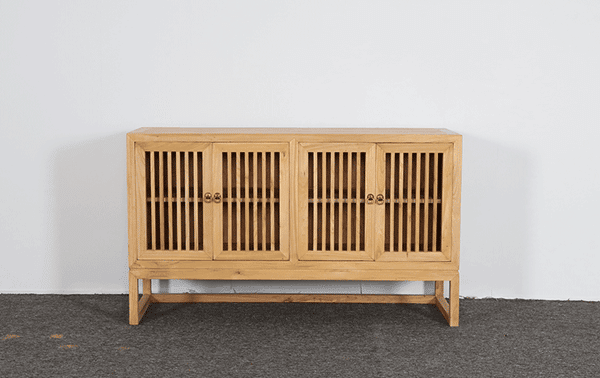
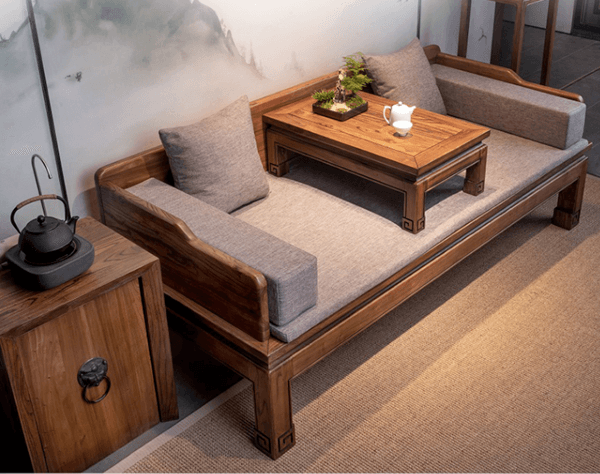
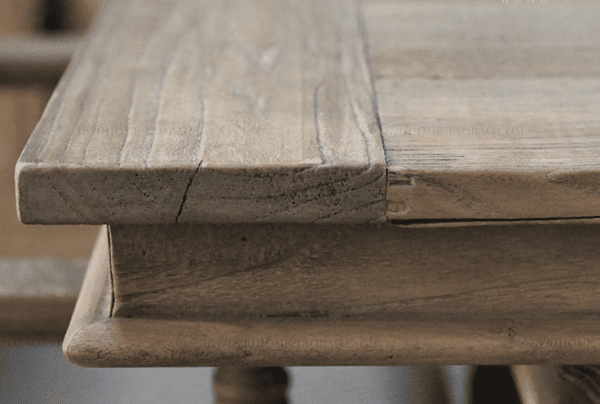
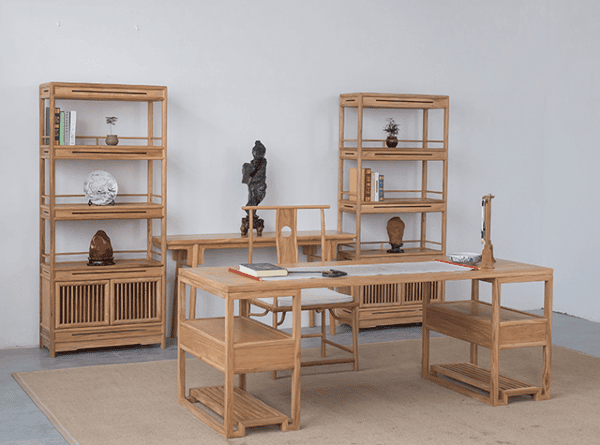
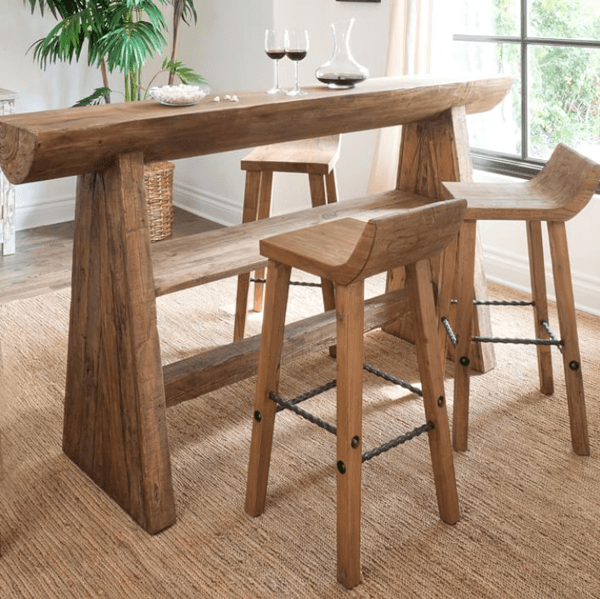
Advantages of elmwood
- Elmwood is a good wood for furniture since it is durable and it lasts long for years.
- Elmwood is a tough wood with excellent mechanical strength, good corrosion resistance, medium hardness and strength, and a high collectible value.
- The wood is a heartwood species with a violet and grey hue.
- Elmwood furniture has a crisp and transparent texture with a smooth surface.
Disadvantages of elmwood
- The elmwood furniture is prone to termite and other insect attacks.
- It takes time to dry.
- Because elm has a poor material extraction rate, material selection is critical.
- The greater the price of furniture items, the clearer the texture and the thicker the furniture.
8. Pinewood Furniture
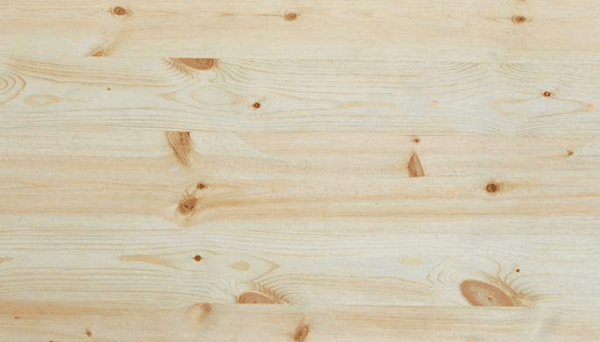
Pinewood is utilized for forest afforestation all around the globe because it grows so quickly.
Because pine wood has low transit distances as compared to domestic wood, it can be treated inexpensively and rapidly.
Because pinewood is a medium-hard wood, it can be treated extremely effectively.
It can also be available in cut and round lumber, which is used to make fiber and chipboard.
Pinewood is used extensively in the manufacture of cell and paper products and is mostly utilized in the manufacture of furniture, such as chairs, tables, and cabinets constructed of solid wood. Pinewood is often utilized as a veneer material.
This furniture material is an excellent material for door frames, window frames, wood shelf, wood cladding, and roof constructions as structural and structural timber.
Pinewood is one of the easier furniture materials to the source. If you are one to look for natural and zero-pollution furniture material for your homes and offices, pinewood is one of your best options.
Nowadays, many furniture items on the market are made of Pine, so looking for pinewood material won’t be difficult to do so.
Compared with other materials of furniture, pinewood’s price goes between 3000-4000¥/m³ (FAS level).
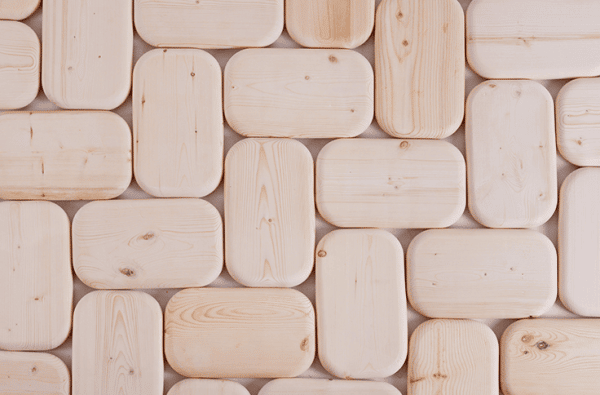
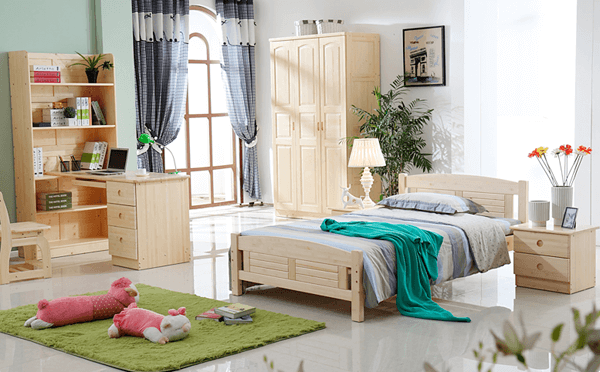
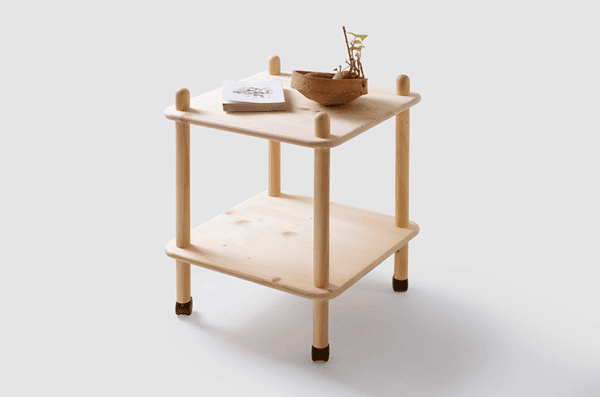
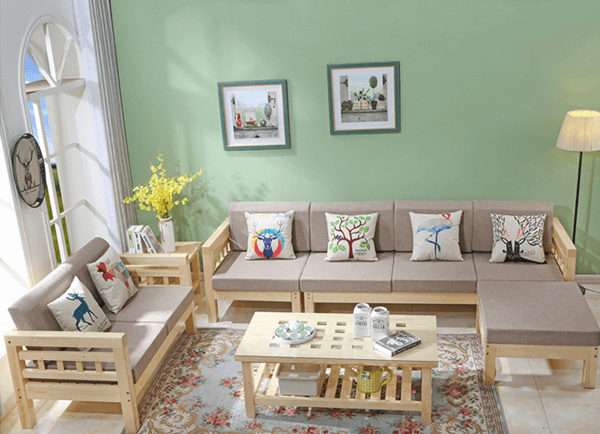
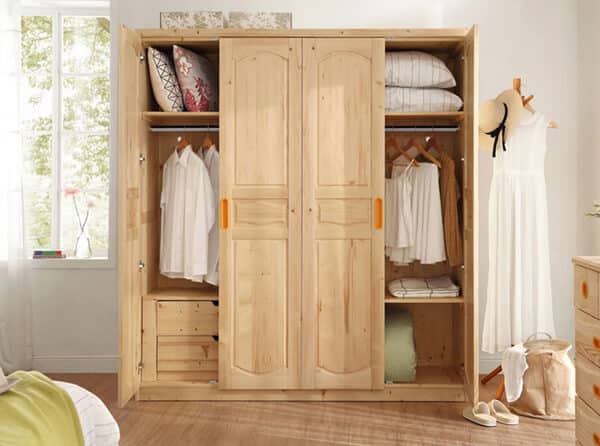
Advantages of pinewood
- The first benefit of choosing a pine conservatory is that it is ultimately a less expensive choice than hardwood.
- By selecting pine, you may be able to build a conservatory addition on your house rather than not having one at all.
- Pine has a high level of structural strength. As a result, pine, like other timbers, does not need reinforcement.
- Furthermore, pine, like other timbers, may be shaped into various forms to fit particular needs and preferences.
- To emphasize the unique grain, it may either be painted in a single color or stained with a transparent stain.
Disadvantages of pinewood
- You need to know that to avoid decay, pine must be properly and thoroughly treated with powerful preservatives.
- Pine is a softwood that is easy to crack and distort with time, and the moisture level is too high, making cracking more likely.
- Furthermore, pine, being a softwood, is more readily damaged and has a propensity to shift when compared to any other timber.
- Shrinkage and swelling occur when seasons change owing to greater and lower amounts of moisture, which may create painting issues.
9. Cherry wood Furniture
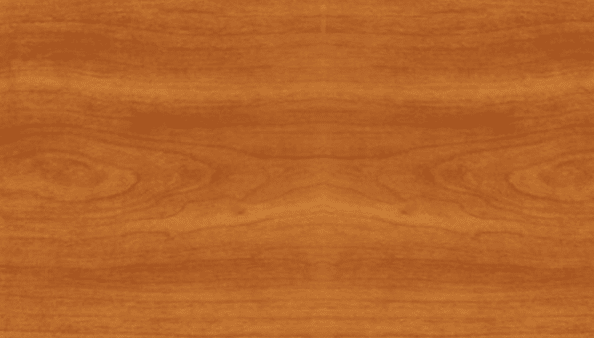
Cherry wood is mostly found in the United States, although it is also found in Europe and Japan.
They are known as European cherry wood and Japanese cherry wood. They are the raw furniture materials for ornamental panels, which are extensively utilized in a variety of industries.
This kind of wood is widely sought after by both professionals and homeowners since it is a beautiful and easy-to-work-with wood. It also darkens and gets richer with age.
Cherry is a deciduous hardwood with a beautiful, straight grain that ranges in color from reddish-brown to blond.
The furniture of cherry wood is yellowish, and there are small black spots in the forest.
Cherry wood is rare in furniture, relatively speaking, with more high prices ranging from 8000-10000¥/m³ (FAS level).
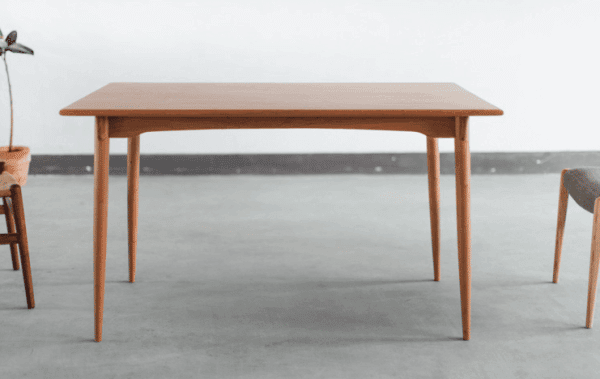
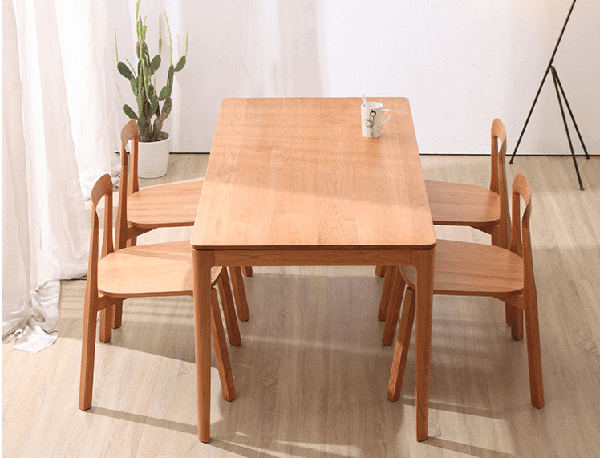
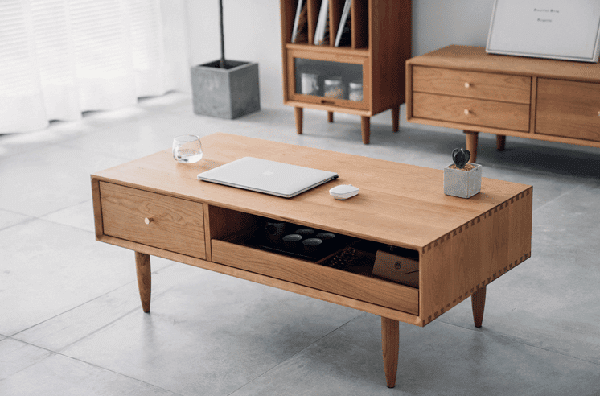
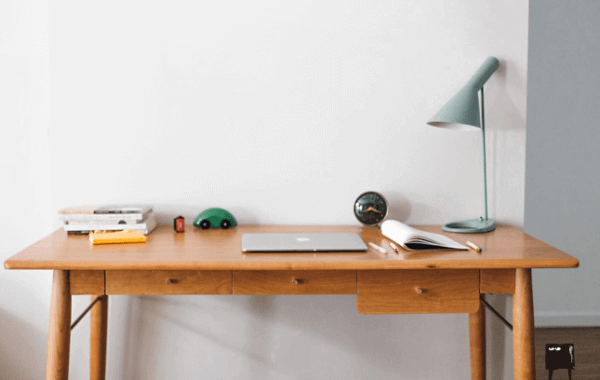
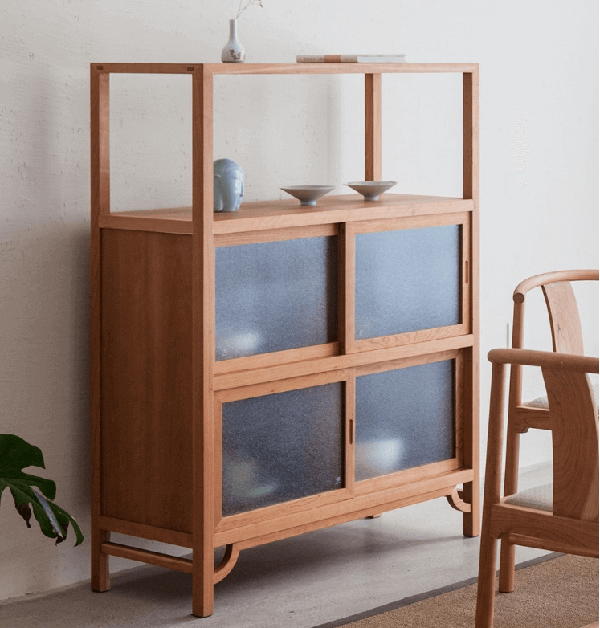
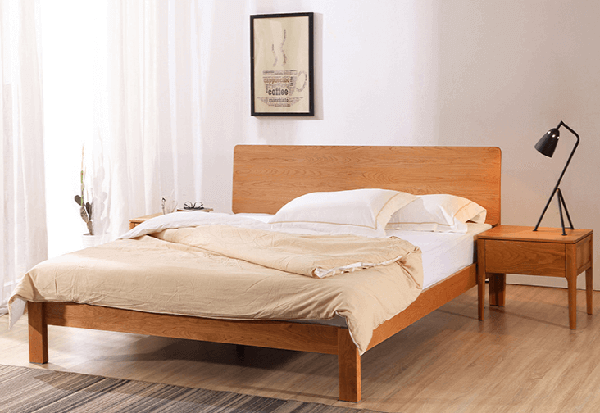
Advantages of cherrywood
- To begin, the cherry wood veneer is delicate and natural dark red in color. The decorating result is consistent, beautiful, and warm, giving them the impression of red lips.
- The cherry wood veneer furniture has a fine and transparent texture, excellent polishing performance, and painting effect, and is a very tall ornamental panel.
- Cherry wood panel offers excellent bending properties and a high shrinkage rate.
Disadvantages of cherrywood
- Direct sunlight may damage your cheerful wood since it is extremely sensitive to sunshine, and it will also alter the color of your wood in an unexpected manner.
- When compared to other hardwoods such as oak or hickory, cherry wood is not as durable.
Cherry wood is susceptible to water and moisture damage. Install no cherry wood items in your bathroom or laundry area. It may be necessary to clean it on a daily basis.
10. Additional furniture wood material knowledge
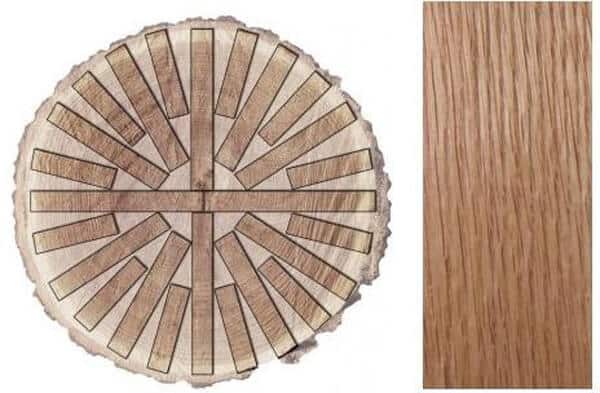
1. Sawing raw furniture materials
Before we met the finished product, it is important to understand how we prepare and saw raw furniture materials to meet the desired outcomes we want for our furniture.
There are three standard methods of sawing logs: rift sawing, plain sawing, and quarter sawing.
1.1. Rift sawing
Rift sawing is a technique of radially sawing logs with the purpose to make boards.
This method produces the most quantity of waste, increasing the cost of this lumber.
Rift sawn timber is usually thin, with a fairly straight grain pattern on the board’s face.
To prevent the flecks that are prevalent in the species, rift sawn timber is generally utilized with oak.
Rift sawn wood produces the toughest boards with the most uniform aesthetic appearance of long and straight grain lines. Generally, this is the cut of choice for fine furniture manufacturers who want consistent patterns across their designs.
1.2. Plain Sawing
Plain sawing is the most common and affordable method to mill a log into planks.
Moreover, it is the fastest way to slice the boards.
Plain sawn, often known as flat sawn, is the most popular kind of wood. This is the most cost-effective method of turning logs into the timber. The most frequent kind of cut is plain-sawn lumber.
Although not as effective as live sawn, plan sawing is still material-efficient and produces attractive grain patterns.
1.3. Quarter Sawing
Quartersawn wood has an incredible straight grain pattern that lends itself well to design.
It is the typical wood used in creating mission-style furniture and is often used for cabinets, flooring, high-end bespoke crafts, and furniture.
Walnut, maple, and cherry are all popular quarter-sawn wood species.
Aside from the desired grain pattern, this kind of wood is dimensionally stable, making it excellent for working with.
Quartersawn timber has almost no twisting, warping, or cupping. It is less prone to surface checking and elevated grain and is more resistant to moisture penetration.
One disadvantage of this method is that it leaves some scrap.
If you want to compare the difference between quarter and rift sawn wood, here is a video to more comprehensive knowledge.
https://youtu.be/GEvKuU0muRk
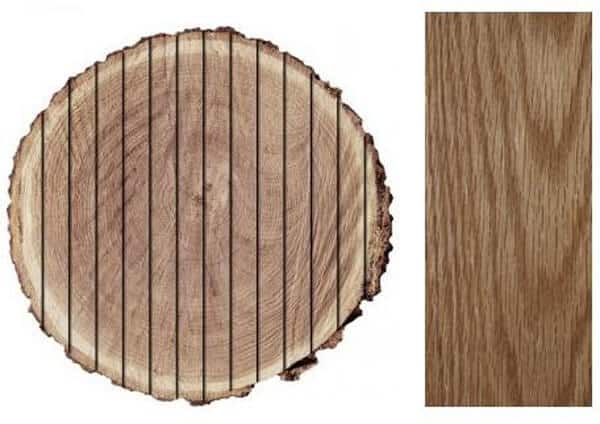
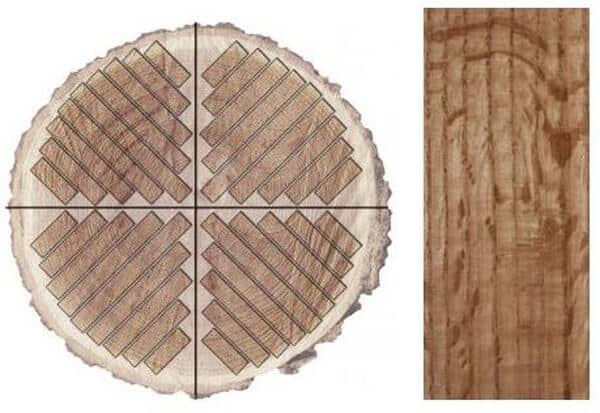
2. Types of materials
There are different kinds of materials used in furniture manufacturing. They are particleboard, fiberboard, HDF, MDF Plywood, and Veneer.
Particle Board (chipboard)
Particleboard is created by compressing wood particles and gluing them together. The chips in flat-pressed particle boards are mostly parallel to the surface.
Because the chips in the surface layer are smaller than those in the center layer, the particle board’s surface is denser and more compact than the middle.
Multiple compressions are given to the particleboard sheet to produce the tightest possible connection between the resin and the wood pieces.
Particleboard is manufactured with one-, three-, five- and multilayers, coated and uncoated; ground and unpolished; flat molded and extruded; painted and laminated (film, paper).
Fiberboard
Fibreboard is engineered wood furniture wallboard composed of wood chips, plant fibers, softwood flakes, sawdust, and other recyclable materials such as cardboard or paper that are bonded with a synthetic glue under high pressure and heat before being compacted into hard sheets.
Despite the fact that fiberboard is an environmentally benign material, it is essential to note that it includes compounds such as urea-formaldehyde, a carcinogen that may be dangerous if not handled properly.
HDF (high-density fiberboard)
High-Density Fiberboard (HDF) is wood-based engineered woof furniture made of wood fiber recovered from chips and pulverized wood waste and produced by glue under extreme pressure and heat.
HDF is a wonderful alternative to solid wood, but like with any material, it is not suitable for every job. We suggest only utilizing HDF for interior cabinets since it is not intended to withstand outside conditions.
It’s also worth noting that one of the most common issues that cabinetmakers have when dealing with HDF is a lack of design choices.
MDF (Medium-density fiberboard)
MDF is a kind of engineered wood furniture material that is comparable to particle board but considerably denser and tougher.
The surface of MDF is extremely smooth, and there are no knots on the surface.
MDF has no wood grain since it is made up of such tiny wood fibers. MDF has no holes, unlike particleboard, since it is pressed so hard at such high temperatures.
Wood particles are held together by lignin and paraffin so that the MDF is a very eco-friendly material.
Plywood
Plywood is a well-known multi-purpose manufactured wood-based panel material used in Canadian building projects.
Plywood joins resin and wood fiber sheets to create a composite material that is marketed in panels.
The face veneers on a standard plywood panel are of better quality than the core veneers.
The core layers’ purpose is to enhance the gap between the outer layers, where the bending stresses are greatest, thus increasing rigidity forces.
Plywood is a layered glued wood veneer of sheets of birch, alder, ash, elm, oak, beech, linden, aspen, poplar, maple, spruce, pine, fir, cedar, and larch.
Plywood consists of three or more sheets of veneer, with the grain direction of adjacent layers oriented perpendicular to one another.
Veneer
Wood veneer is a finely sliced wood that is used to give interior trim work a completed wood appearance. The wood is often cut to be less than a one-eighth inch thick and glued to a low-cost substrate.
The aim of veneer is to create the appearance of a higher-end solid wood for interior trim at a cheaper cost and in a quicker production time.
A veneer is created by slicing logs of wood one-eighth of an inch thick using a rotating lathe. The technique is comparable to that of a deli worker slicing small pieces of cheese off a block.
The log is suspended between two blocks, and the rotary lather gently removes long, thin pieces of wood for the veneer. After that, the veneer will be applied to a substrate.
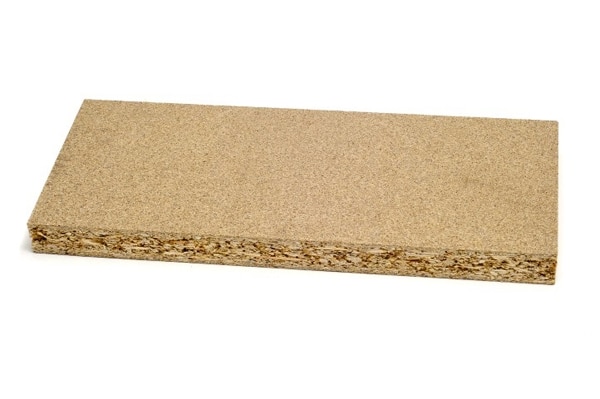
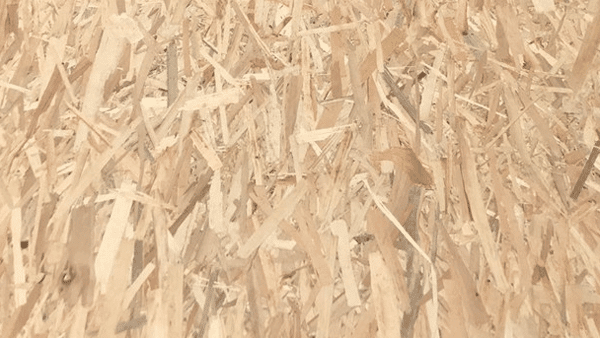
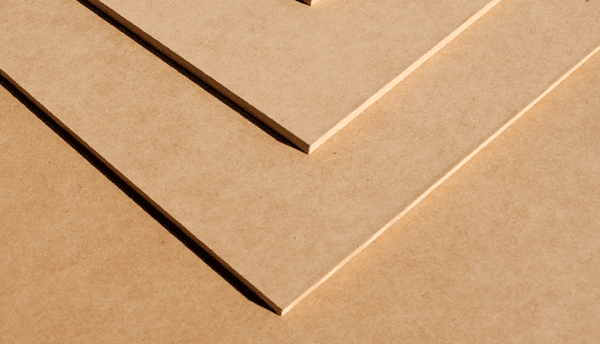
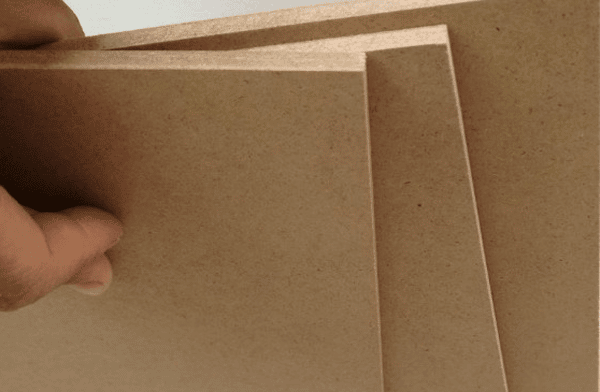
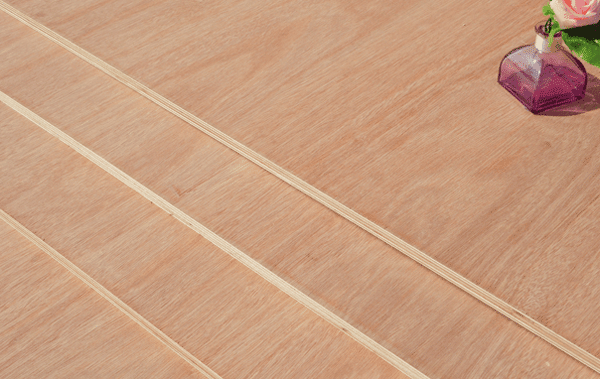
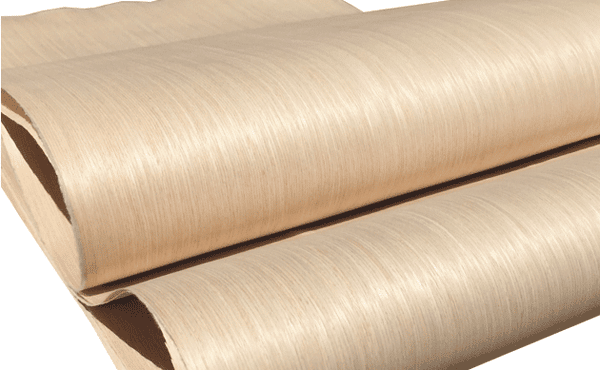
Now It’s Your Turn!
Overall, we need to keep in mind that the best wood for furniture actually depends on your requirements.
Did you learn something new from the different types of wooden furniture?
Or maybe you have a question?
Either way, leave a comment below right now.

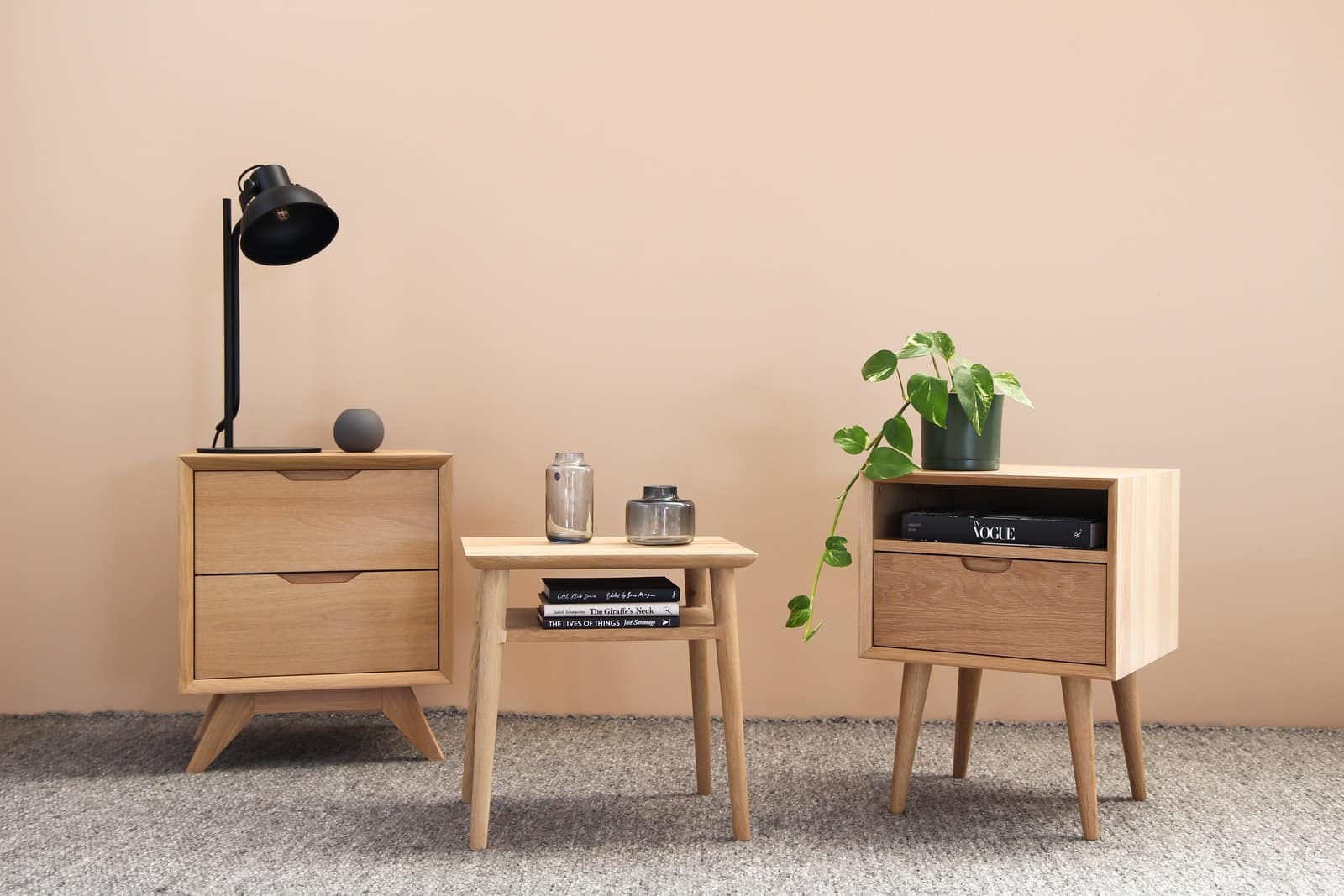

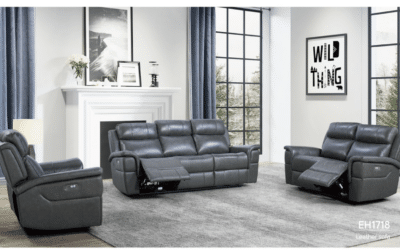
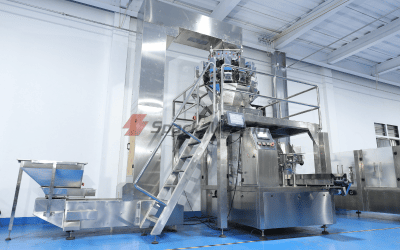
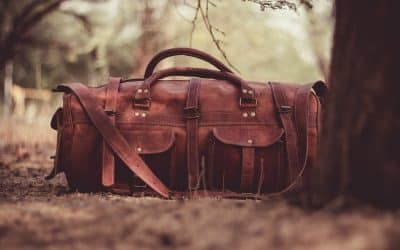
It’s good to know from this article that furniture made from black walnut is not easily deformed and has excellent decorative stability. I’m currently looking for wooden furniture sets that will complement my house’s vintage style. I’ll keep it in mind to look for pieces made from black walnut.
Thanks for sharing a piece of awesome information about types of wooden furniture. This article help me to choose the best furniture for my house. Nice article!!
Very happy to see that you are alright and doing your work. God bless you.
thanks this was very helpfull im starting volunteer work at a charity furniture showroom it will give me more confidence when advising customers on the types of wood dennis bramble
thanks this is very helpfull regards dennis bramble